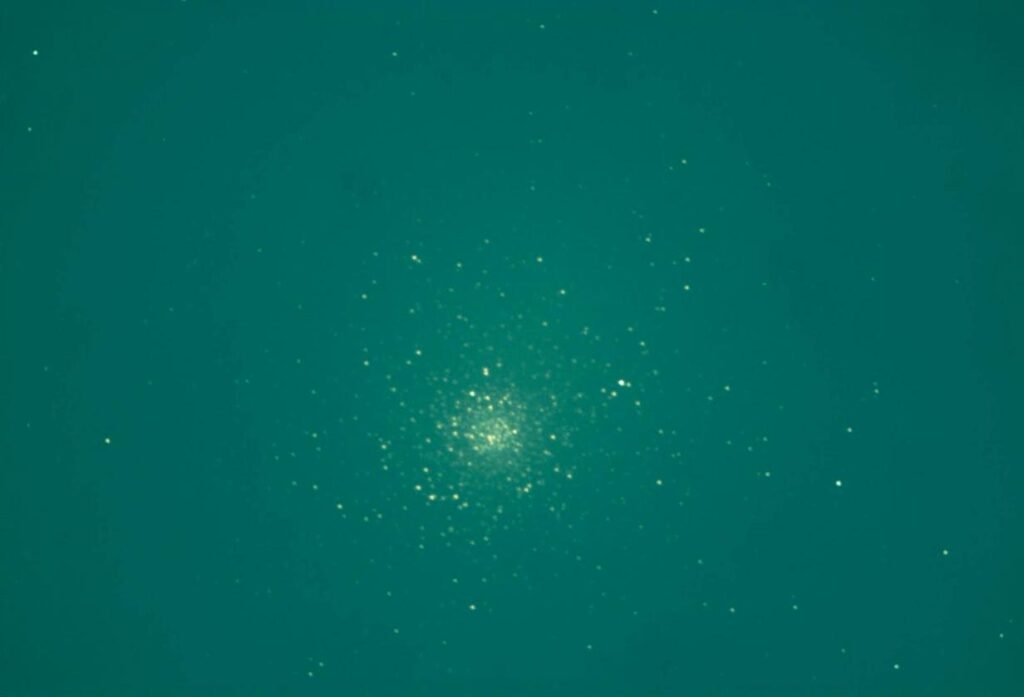Target: M5 – Globular Cluster in Serpens
Date & Time: May 8, 2025 @ 9:00 PM PDT
Location: El Camino College Observatory
🧪 Imaging Setup
- Telescope: Celestron C11 Schmidt-Cassegrain
- Aperture / Focal Ratio: 280mm / f/10
- Camera: ZWO ASI294MC (Color CMOS)
- Capture Software: SharpCap
- Total Integration Time:15 minutes
- Exposure: 15 × 60s subs
- Gain: 117
- Color Space: RGB24
- Output Format: FITS
- Tracking: [Optional entry: autoguided mount or manual correction]
📌 Target Data: M5 (NGC 5904)
- Object Type: Globular Cluster
- Constellation: Serpens
- Right Ascension: 15h 18m 34s
- Declination: +02° 04′ 58″
- Distance: ~24,500 light-years
- Apparent Magnitude: 5.7
- Apparent Size: ~23 arcminutes
- Estimated Star Count: > 100,000
- Estimated Age: ~13 billion years (among the oldest known globulars)
🌌 Observational Notes
- M5 presents a highly concentrated core, nearly symmetrical, with star density gradually decreasing outward.
- This particular capture reveals fine granularity in the outer halo, a result of steady tracking and 15-minute integration via SharpCap.
- The color-corrected image displays stellar population uniformity typical of older globular clusters.
- M5’s structure appears even tighter than M13 in this session, possibly due to its core’s greater concentration index.
🧠 Scientific Highlights
- M5 is among the oldest star clusters in the Milky Way, with stars over 13 billion years old.
- It contains a significant population of blue horizontal branch stars, though these cannot be resolved without photometric filtering.
- This object is a valuable target for studying stellar evolution at the galactic halo scale.
📚 Historical & Cultural Insight
- First cataloged by Gottfried Kirch in 1702 during a comet observation.
- Added by Charles Messier in 1764.
- M5’s dense core has made it a favorite for comparing structural models of cluster formation and collapse.
🛠 Recommendations
- Future captures at f/6.3 with a reducer would allow for a wider field and better resolution of the periphery.
- To resolve deeper stellar population or identify variable stars, consider adding photometric filters (e.g., B or V band).
- An overlay with Gaia DR3 proper motions would reveal internal motion patterns across epochs.
📁 Image Reference
